
The ninth edition of the Global Peace Index, which ranks the nations of the world according to their level of peacefulness, has ranked Syria as the most dangerous country in the world.
The world is less peaceful today than it was in 2008, says the report. Last year alone it is estimated that 20,000 people were killed in terrorist attacks up from an average of 2,000 a year only 10 years ago.
The Global Peace Index is a composite index comprised of 23 qualitative and quantitative indicators that gauge the level of peace in 162 countries. The index gauges global peace using three broad themes: the level of safety and security in society, the extent of domestic and international conflict and the degree of militarisation. The figures based on 23 different metrics, including factors like murder levels, perceptions of criminality, terrorism and military expenditure, have been collated to form a single figure, the Global Peace Index.
India:
India ranks low at 143 in the Global Peace Index with a regional ranking of 5 in South Asia. India spends around $342 for cost of containment of violence and ranks 5th the world in this category. The other countries with the largest violence containment expenditure include the United States, China, Russia and Brazil. These countries account for 54 per cent of total violence containment expenditure while also accounting for 45 per cent of world GDP and 46 per cent of the world’s population.
The report states that the number of casualties from internal conflict has risen in
India “where a Maoist insurgency stills runs rife.” But it also says that the downgrade in India’s score is tempered by an improvement in political stability.
The least peaceful countries in the world are;
1. Syria

Syria remains the world’s least peaceful country, followed by Iraq and Afghanistan. The burgeoning regional influence of ISIL, the Sunni jihadist group, was an important factor behind the worsening scores in particular in Libya, Yemen, Iraq and Syria. ISIL made significant territorial gains across western and northern Iraq in 2014, adding to its presence in Syria, which remains locked in a bloody stalemate between government forces loyal to the president, Bashar al-Assad, and numerous rebel groups fighting against it.
Syria is among the countries where the number of deaths from organised internal conflict experienced the most marked increase. It has the largest total number of refugees and displaced people with an estimated 43 per cent of the population being displaced, equating to approximately 9.55 million people. 2014 was the worst year so far in the Syrian civil war and was also the deadliest conflict in the world in 2014, resulting in at least 72,000 civilian and battle-related deaths.
2. Iraq

At the number 2 position in the world’s most dangerous countries in Iraq with a ranking of 161. Since the start of the Iraq war, the Middle East has been descending into deeper levels of violence. The conflict in Iraq deteriorated significantly in 2014, with the number of fatalities more than doubling from 8,256 in 2013 to 18,489 in 2014 and the indicator for intensity of internal conflict reaching the worst possible score.
ISIL made significant territorial gains across western and northern Iraq in 2014. A third of people displaced by conflict inside their own countries in 2014 are in Iraq and Syria alone. Iraq is among the countries that experienced the most marked increase in death toll in the Middle East. The report states that there is a link between conflict and displacement, with Iraq recording large increase in refugees and IDPs due to the deteriorating conditions of conflicts. Violence in Iraq has escalated in part due to the concentration of power under Nouri al-Maliki’s largely Shia government which disenfranchised the Sunni, leading to grievances and the expansion of violent groups such as ISIL.
3. Afghanistan

The most substantial change in the index was recorded for the Middle East and North Africa (MENA) which now ranks as the most violent region, overtaking South Asia (which includes Afghanistan) from last year’s GPI.
Against the backdrop of the withdrawal of most international forces from Afghanistan, the number of deaths from internal conflict in the country rose last year in tandem with an increase in political terror.
The impact of terrorism indicator also deteriorated, with terrorism being closely linked to conflicts in Syria, Iraq, Nigeria and Afghanistan, the report states. The level of terrorism has grown steadily over the last decade, and shows no sign of abating. Eighty-two per cent of these deaths occurred in just five countries: Iraq, Afghanistan, Pakistan, Nigeria and Syria.
4. South Sudan

South Sudan’s ranking declined by only three places, but this was on top of by far the sharpest fall in the 2014 GPI. It remains embroiled in the civil conflict that broke out in December 2013, and which has thus far proved immune to numerous peace efforts. South Sudan also fell for its third consecutive year, slipping a further 3 places to 159. The country remains embroiled in a civil conflict between forces loyal to the president, Salva Kiir, and those fighting on behalf of his former deputy, Riek Machar. Faced with a protracted conflict, the government has increased military expenditure, and increased the number of armed service personnel, leading to deteriorations in these scores. At the same time, tensions remain high with Sudan.
5. Central African Republic

In 2008, there were only three countries in the GPI that had a score worse than 3.0 (Somalia, Iraq and Sudan) and no countries had a score worse than 3.5. However, in 2015 there were nine countries with scores greater than 3.0 including Central African Republic. This demonstrates how the least peaceful countries accounted for the majority of the fall in peacefulness.
The two countries with the biggest change in violence containment expenditure as a per cent of their GDP between 2008 and 2014 are Central African Republic and Syria. Their increased costs have been derived from four main areas: increased IDPs and refugees, deaths from internal conflict and GDP losses due to conflict and terrorism.
6. Somalia

The Somalian government has been unable to keep control of the entirety of its nation, meaning insurgent groups have been able to travel and trade weaponry. The majority of Somalia’s costs in violence containment stem from IDPs and refugees and homicides. Refugee and IDP populations alone account for 54 per cent of Somalia’s total costs.
7. Sudan

Ranking 156 on the Global Peace Index, Sudan faces tensions with its neighbour South Sudan. Although Sudan’s president has expressed qualified support for his South Sudanese counterpart, both sides continue to allege that the other government is offering support to rebel groups, and there are periodic cross-border attacks, contributing to a decline in the score for external conflicts fought. Violence and civil conflict have displaced millions in Sudan. Non-state conflicts also intensified in Sudan with skirmishes between tribesmen, farmers and ethnic clans.
8. DR Congo
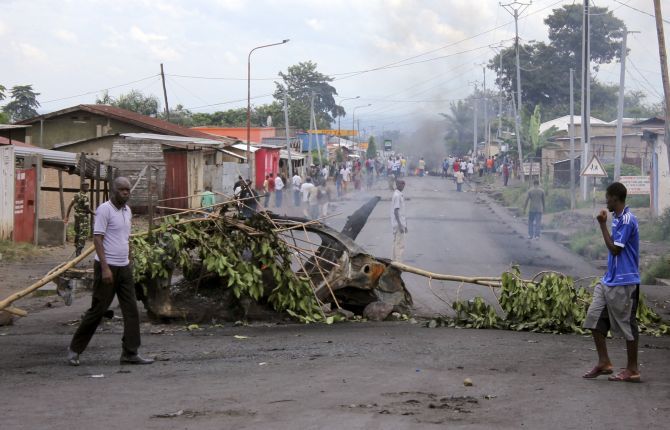
Due to their low levels of positive peace, increased urbanisation poses the greatest risk for safety and security in Democratic Republic of the Congo, Zimbabwe, the Central African Republic, Nigeria, Haiti and Bolivia.
Countries like the Democratic Republic of Congo have very low militarisation, which, combined with poor positive peace, leads to an inability to maintain security in their territory or prevent outbreaks of internal violence.
9. Pakistan
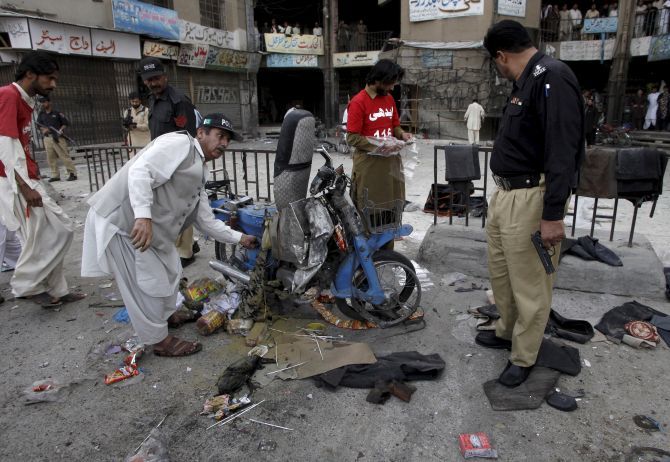
Deaths caused by terrorism increased by 61 per cent in 2013, which resulted in almost 18,000 people being killed in terrorist attacks. Of those deaths, 82 per cent occurred in just five countries: Iraq, Afghanistan, Pakistan, Nigeria and Syria.
Pakistan’s score has similarly deteriorated, on the back of a worsening of its perceptions of criminality; as a result, the country remains second from the bottom in South Asia. The country’s dire domestic security situation continues to be hampered by the presence of Islamist militant groups. Even though the number of deaths from internal conflict did not worsen significantly over the past twelve months, Pakistan suffered a handful of high-profile incidents -- most notably the separate attacks on Jinnah International Airport and an army-run school in Peshawar.
10. North Korea
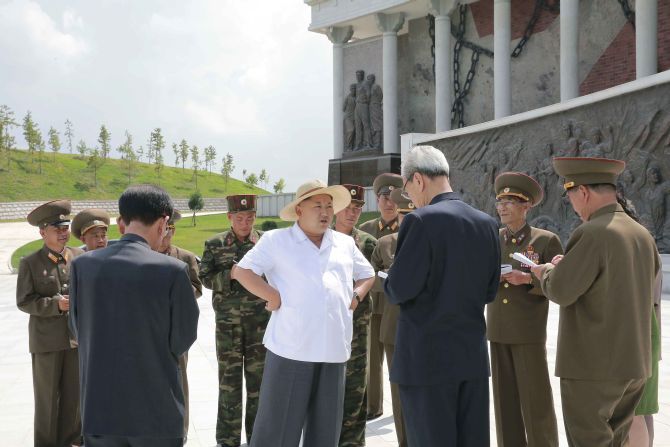
High levels of political terror and militarisation puts the secretive and totalitarian state of North Korea in the list of top 10 least peaceful countries.
The countries that have seen the biggest proportional change in violence containment expenditure have had high levels of internal conflict. North Korea has seen a significant increase in violence containment expenditure as a per cent of their GDP between 2008 and 2014.








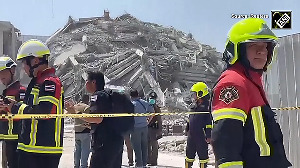
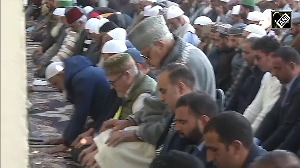
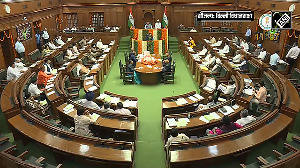
 © 2025
© 2025